Seat adjuster fix-How To
________________________________________
You may notice one day that your formerly rock solid seat now shifts back and
forth under braking and acceleration. I've had this issue for a while now and
finally decided to tackle getting it fixed. Here's how to remedy that problem.
To do the repair you will need the following:
#2 and #3 Phillips screw driver
Impact screwdriver w/#3 Phillips bit
Small hammer
3/8" drive ratchet
4mm Allen socket
small Straight screwdriver
small locking pliers (aka Vise Grips)
(2) 17mm open-end wrench
rags
solvent
all purpose grease
(24) 1/2" i.d. x 3/4" o.d. nylon washer
Remove the seat from the car and place it on a suitable work space on it's back.
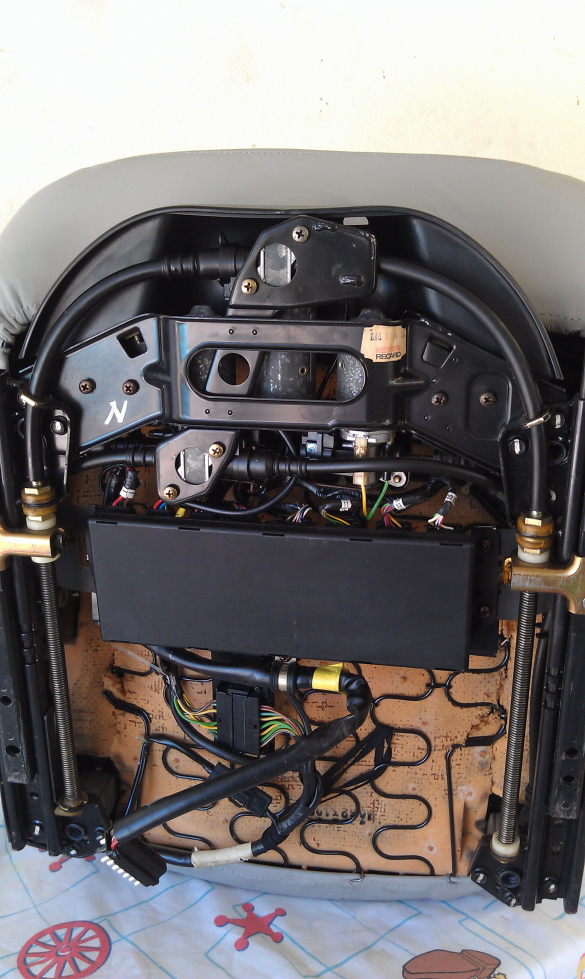
Here is the bottom of my 1990 8-way w/memory driver side seat. Others are
similar. The two fore/aft adjuster screws are visible running down both sides.
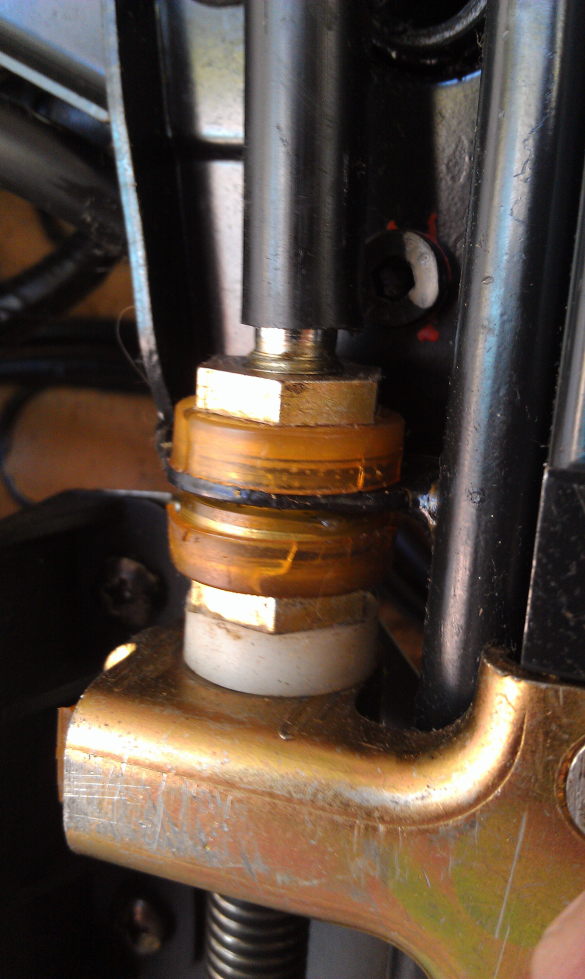
Here's a close up of the offending parts on one side.
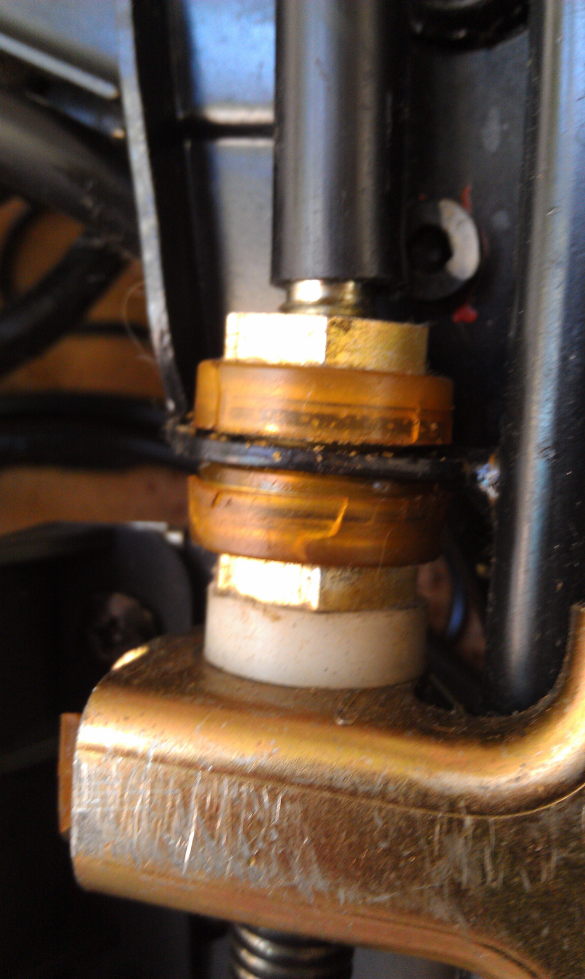
Here's the other side. Those yellowed plastic bits are the plastic cases for
thrust bearings on the adjuster screws. When these come apart they allow play
into the adjuster screw system and the seat starts clunking back and forth when
braking or accelerating hard. We will be removing these adjuster screws and the
deteriorated plastic so we can install new plastic spacers and eliminate the
movement.
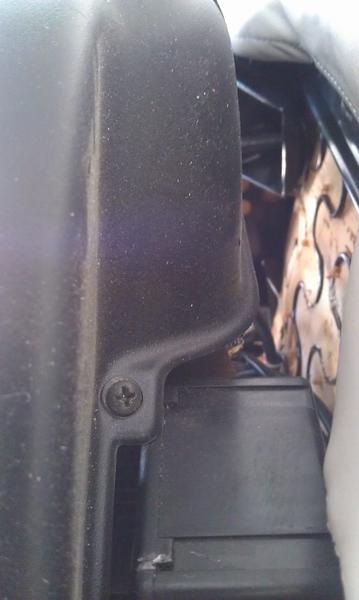
First, remove the front motor cover by removing the two securing screws. Here's
one. The other is on the opposite side of the cover.
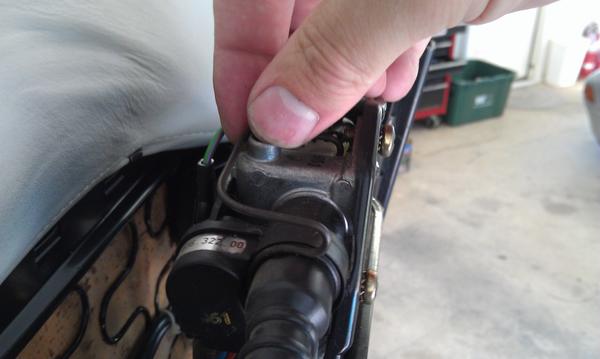
To remove the retaining clip for the potentiometer-side drive cable rotate the
clip toward the bottom of the seat...


then tilt the right side of the clip toward the left off of the motor housing
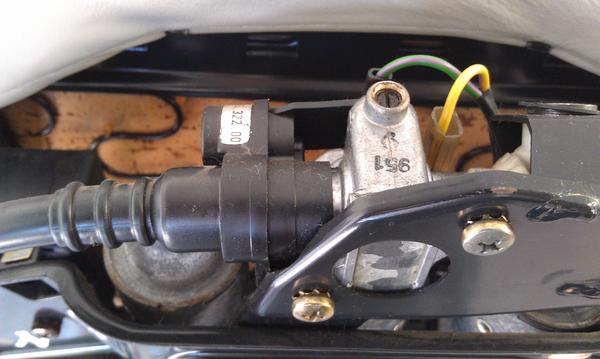
then remove the clip.
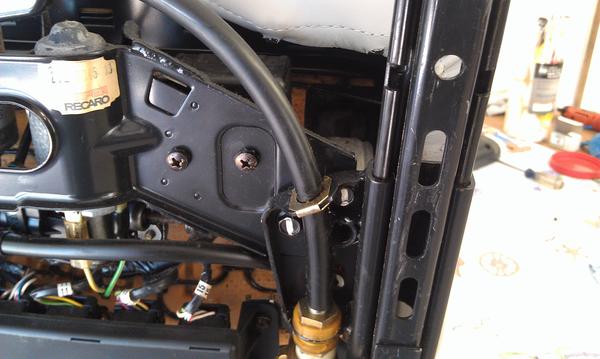
Next we need to remove the drive cable housing retainers here
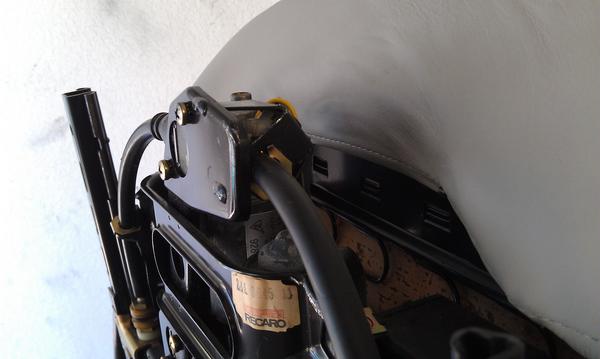
and here so we can remove the drive cable.
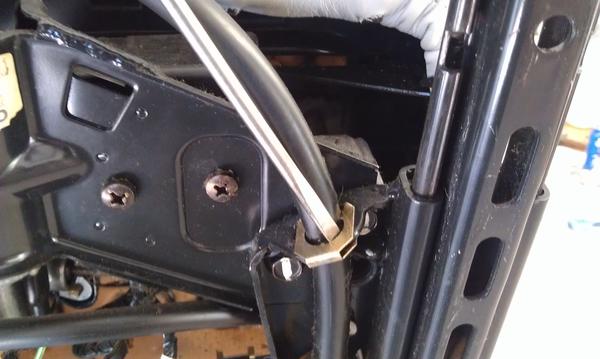
Use a small screwdriver to pry the clips loose from the housing at the adjuster
screw
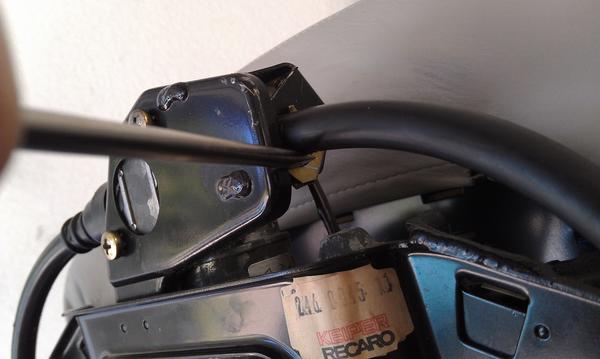
and at the manual seat adjuster drive.
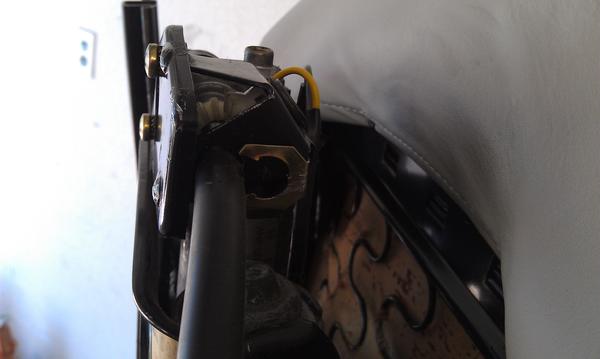
You can leave the clips on the metal or remove them completely.

Grasp the cable housing and withdraw the cable from the manual seat adjustment
drive.
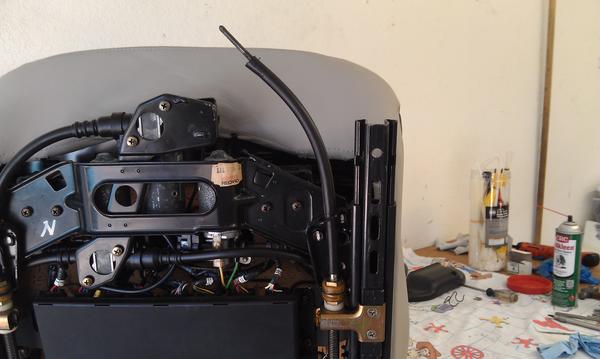
Leave the drive cable attached to the adjuster screw for now.
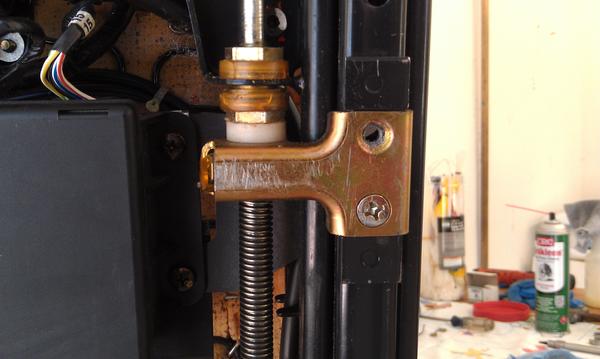
Now remove the two Phillips head screws that hold the adjuster drive plate to
the seat slide rail. You might need to use a hand impact driver to get them
started as they appear to have had thread locking compound applied at the
factory. Remove both screws using a #3 Phillips.
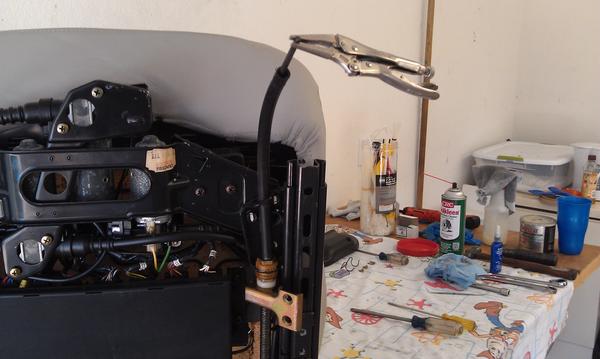
Gently clamp a small pair of locking pliers onto the square drive end of the
drive cable.
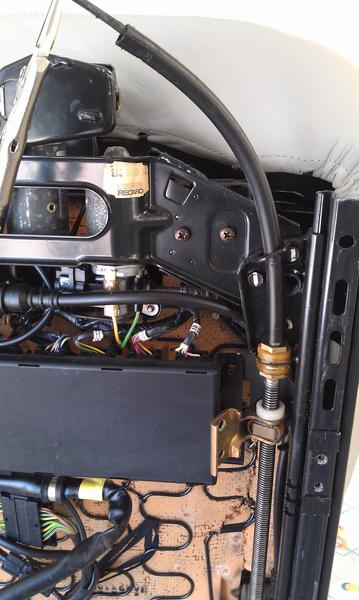
Use the locking pliers as a handle to turn the drive cable and run the adjuster
nut down the adjuster screw away from the upper adjuster screw mount. Give your
self 2"-3" clearance.
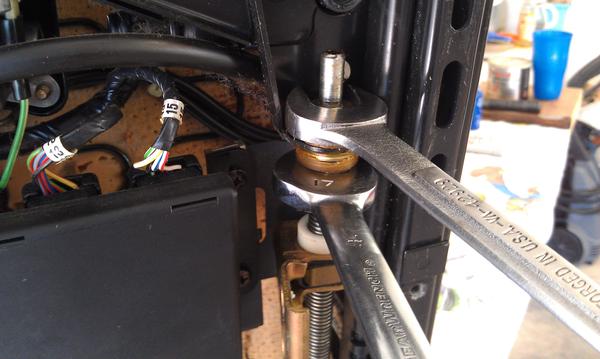
Using two 17mm open end wrenches unscrew the retaining nut from the top of the
adjuster screw. This nut also seems to have had locking compound applied.
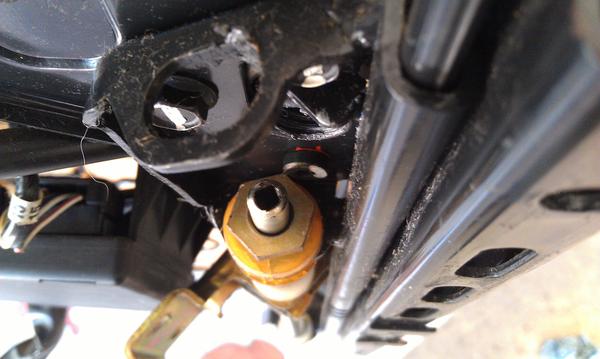
As the upper retaining nut unscrews it will start hitting on the socket head
screw holding the front height adjuster unit to the seat frame. This is OK as
you can continue to turn the lower retaining nut, which will turn the whole
adjuster shaft and finish unscrewing the upper retaining nut.
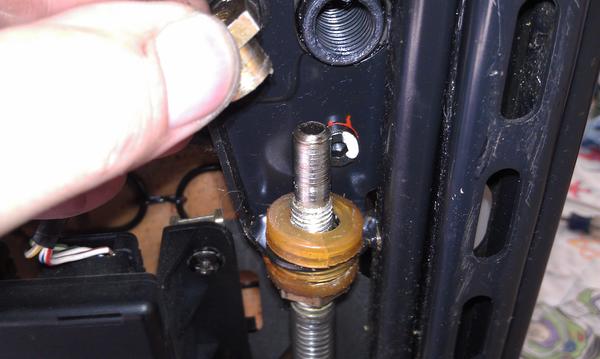
Remove the retaining nut
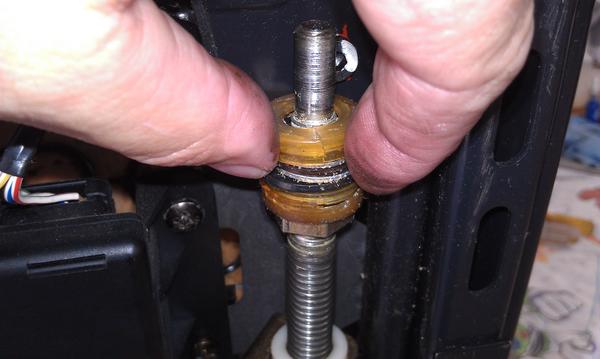
Followed by the plastic bits

and the upper thrust bearing.

Here's the two thrust bearing washers, the bearing cage and balls, and what's
left of the plastic housing.
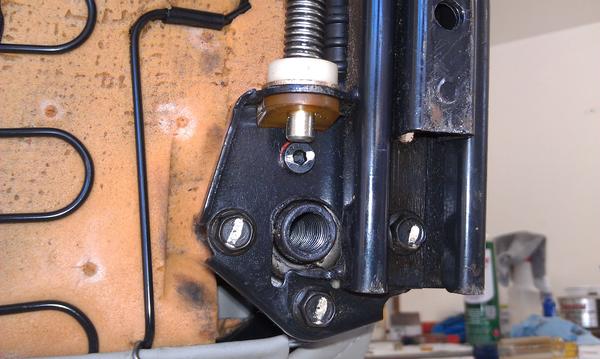
Here's the lower end of the adjuster rod. Remove the socket head screw to allow
the plastic carrier bushing that locates this end of the adjuster rod to come
off.
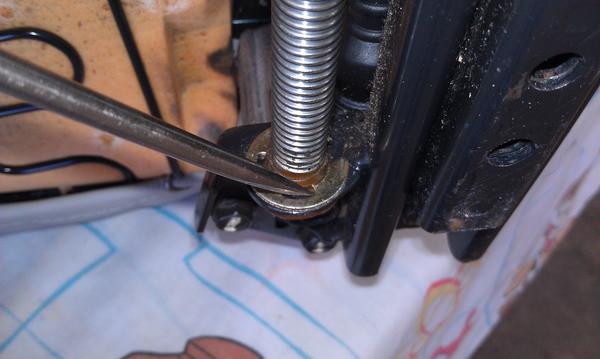
Use a small straight screwdriver to remove the E-clip that holds the lower
carrier bushing.

Lower the adjuster screw
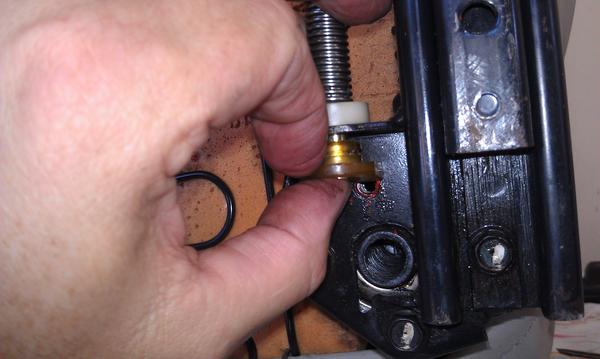
and remove the carrier bushing.
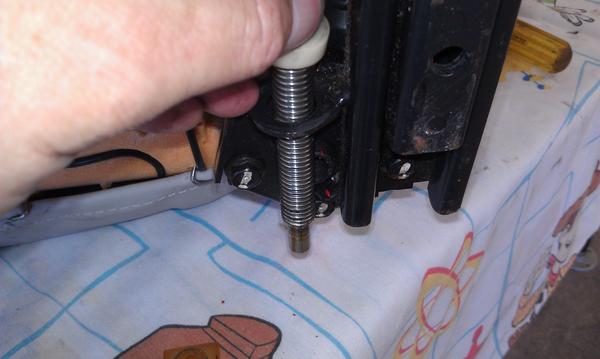
Lower the adjuster screw further
________________________________________
Lower the adjuster screw
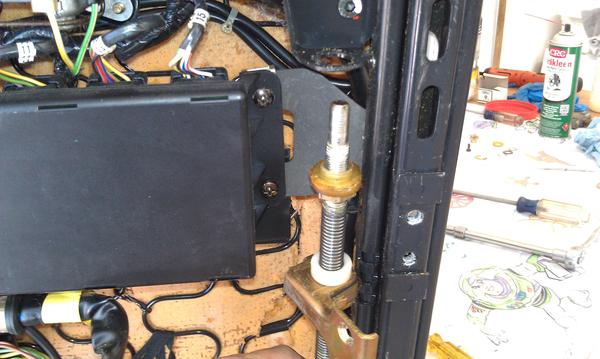
Until the upper end of the adjuster screw is free of the mount
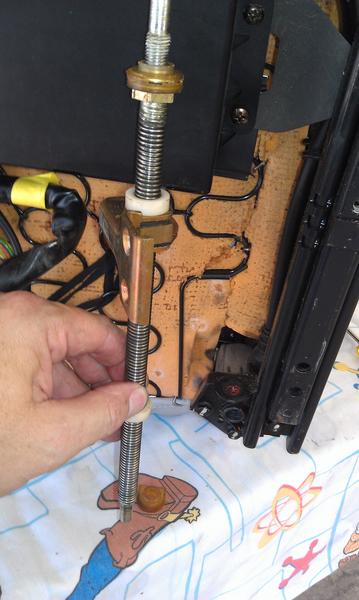
You should now have the adjusting screw and nut free from the seat.
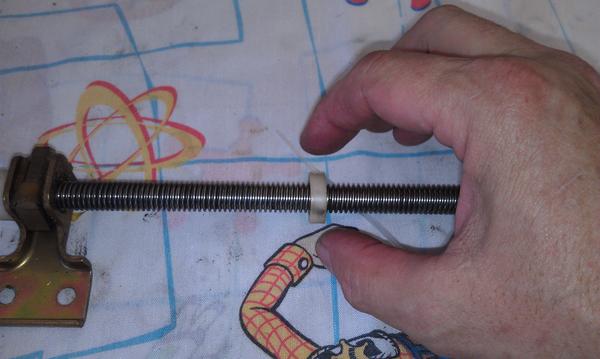
Remove the lower travel stop bumper
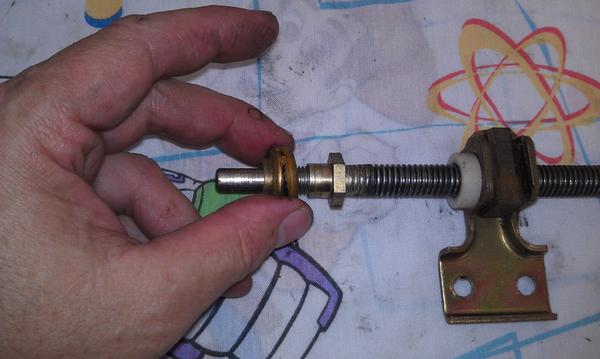
and the other thrust bearing

screw the adjuster nut and plate off the adjuster screw.
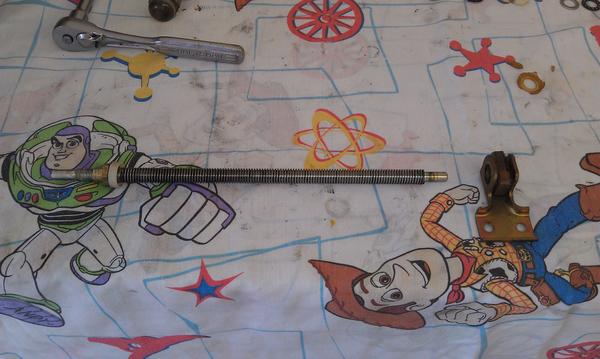
Once the adjuster plate/nut is off the screw remove the upper adjuster stop
bumper bushing.
Note: Help from Woody and Buzz not required but strongly recommended.
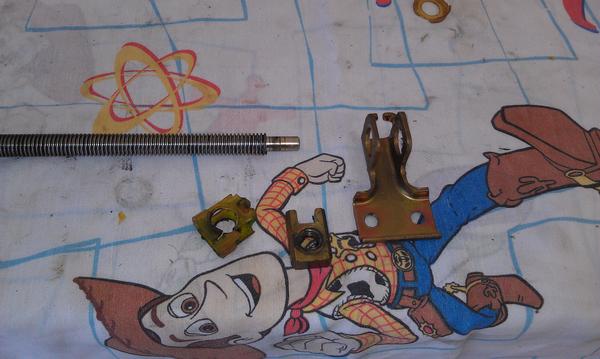
The adjuster nut is cushioned in the adjuster bracket by a plastic surround.
This plastic is also deteriorated so I opted to replace it with plastic washers
as well.
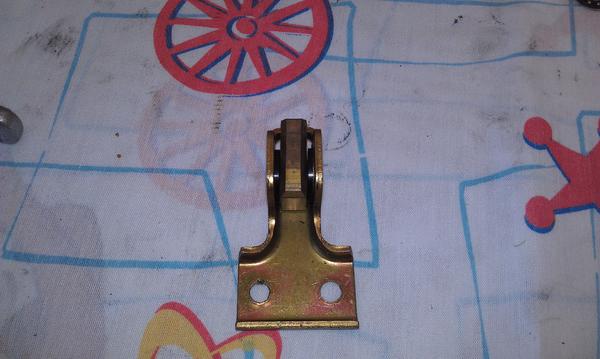
The washers I used didn't fit very snug.

so I clamped the bracket with the nut and washers in a vise and compressed the
clamp enough to snugly hold the washers in place.
Clean the adjuster screw of all old grease and apply fresh grease of your
choice.
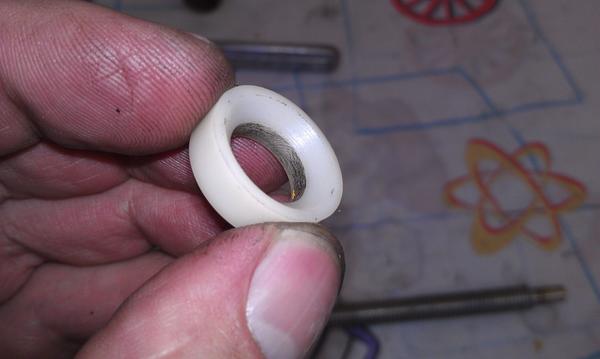
Notice the adjuster stop bumpers are beveled on one side.
The bevel on both bumpers faces toward the back of the seat when installed on
the adjuster screw.
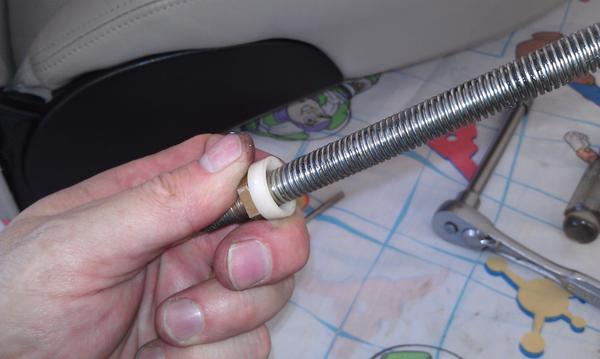
Slip the upper bumper onto the adjuster screw with the beveled side facing the
bottom of the screw.
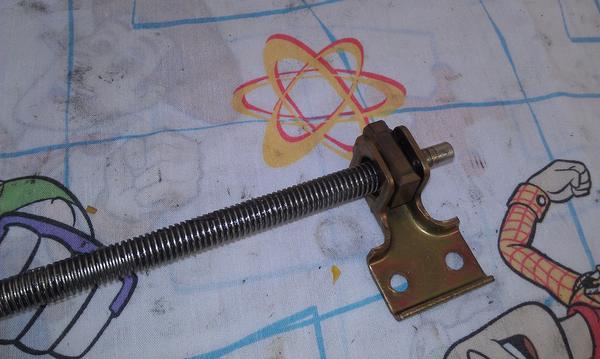
Thread the adjuster bracket back on to the adjuster screw
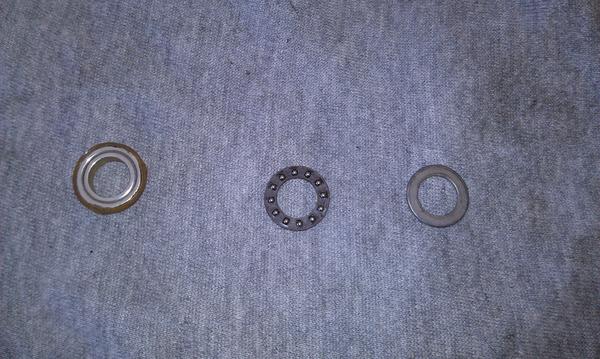
Clean the thrust bearing parts and apply fresh grease of your choice. Notice
each washer is grooved to give the balls a "race" to ride in.
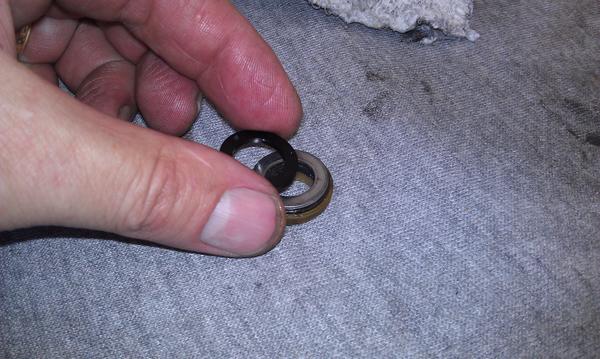
Here is one thrust bearing assembled. I'm adding one washer to take up the space
of the deteriorated plastic. The other side of the bearing assembly has a bit of
the original plastic in place as it has a centering ring. This plastic will
eventually give out but I'm curious to see how much longer it lasts so I re-used
it on this bearing set.

Slip the thrust bearing back on the upper end of the adjuster screw.
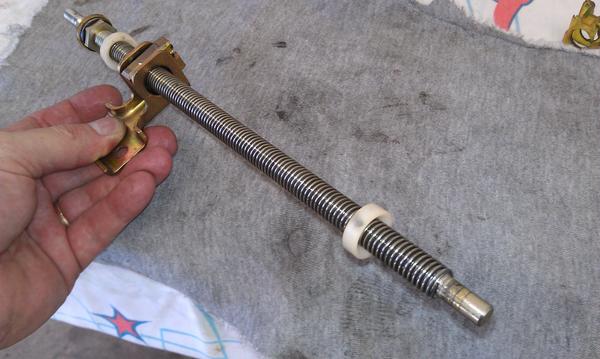
slip the lower adjuster stop bumper bushing on to the bottom of the adjuster
screw, making sure the beveled side is facing the bottom end of the screw.

Insert the bottom end of the adjuster screw into the mounting bracket far
enough to allow the upper end of the adjuster screw the slip up into the upper
mounting bracket.

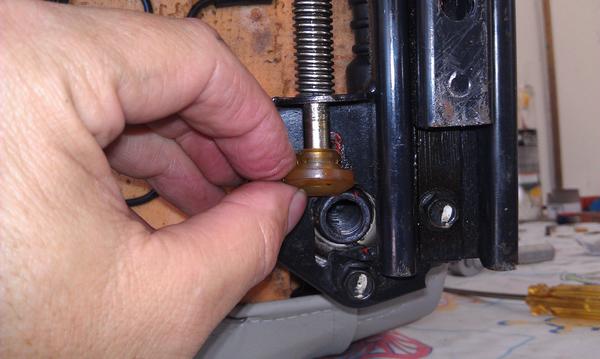
Slip the lower carrier bushing on to the bottom end of the adjuster screw.
The grooved end goes up.

and install the E-clip to retain the carrier bushing.
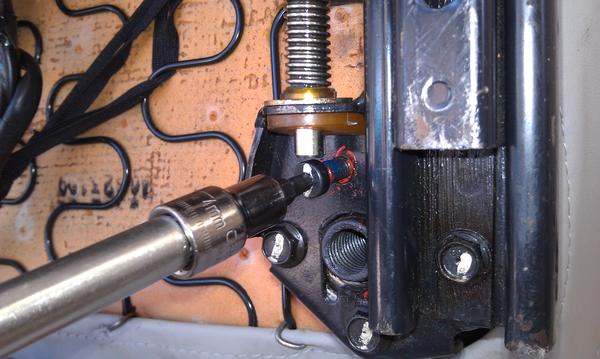
Apply the thread locker of your choice to the socket head screw for the rear
height adjuster. Install the screw securely.
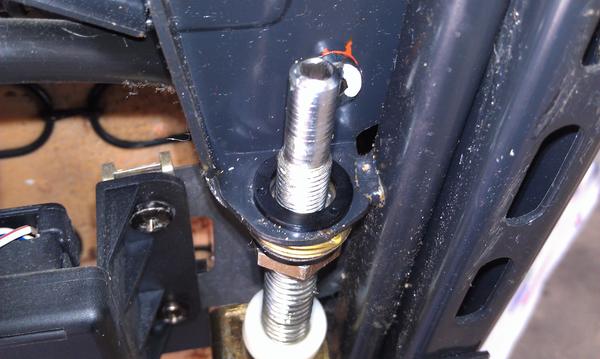
Drop a new nylon washer over the top end of the adjuster screw
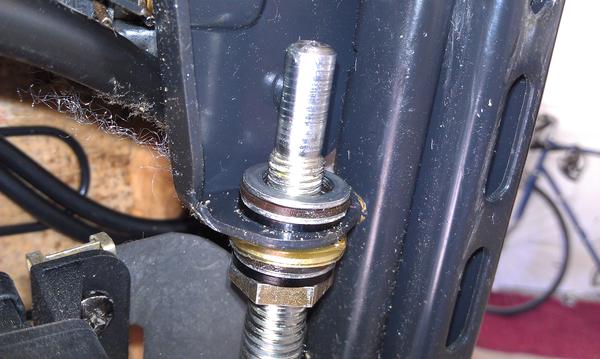
followed by the other thrust bearing
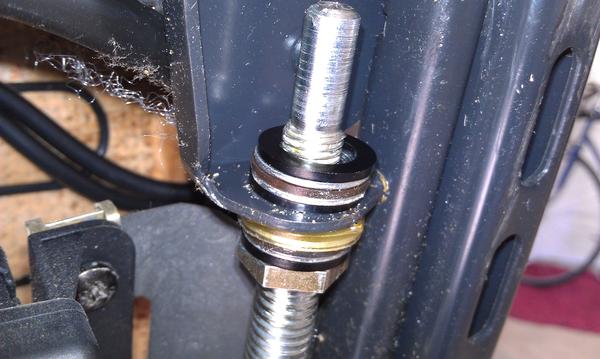
and another nylon washer.
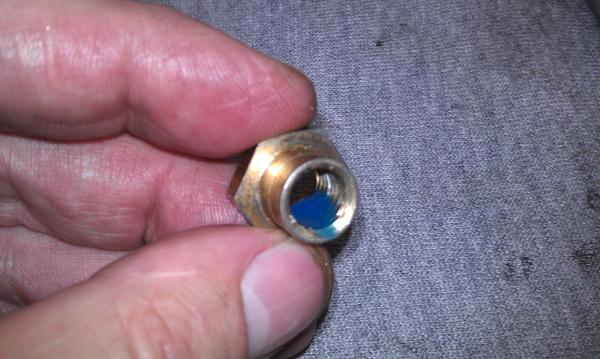
Apply the removable thread locking compound of your choice to the upper
retaining nut
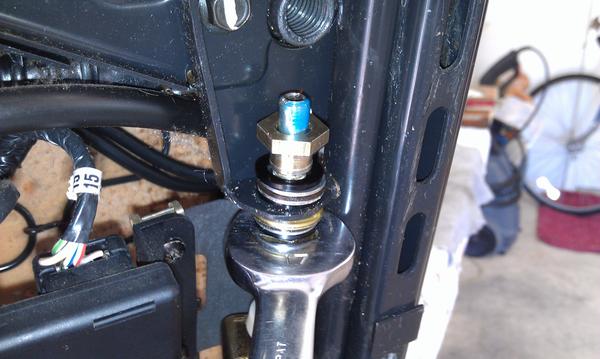
Slip the retaining nut onto the top end of the adjuster screw. Turn the adjuster
screw to get the nut started.
As during removal, the nut will jam against the socket head screw for the front
height adjuster at first so instead of trying to turn the upper retaining nut we
screw the shaft into the nut using the lower retaining nut until the upper
retaining nut is far enough on the adjusting screw shaft to clear the
obstruction. You need to make sure that as you tighten down the upper retaining
nut parts of the upper thrust bearing (nylon washer, bearing "races", cage and
balls, and nylon washer) center on to the shoulder of the upper retaining nut.
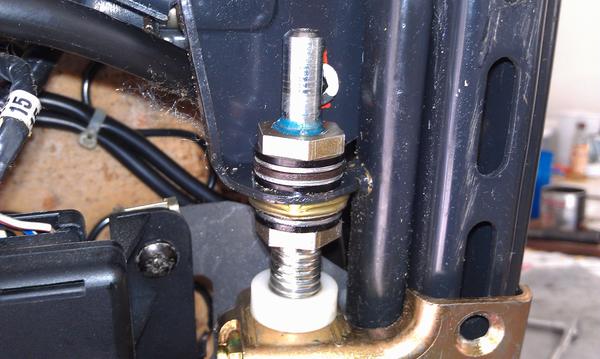
Tighten the upper retaining nut securely.
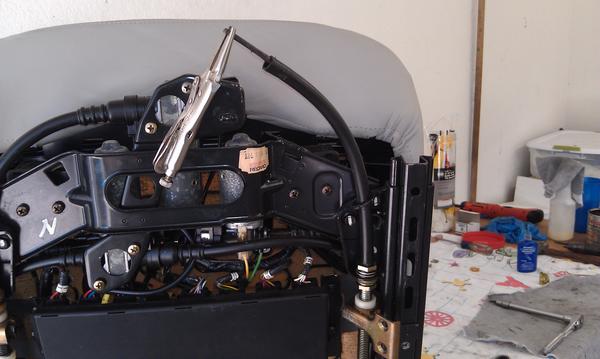
Insert the drive cable, with locking pliers attached, into the end of the
adjusting screw
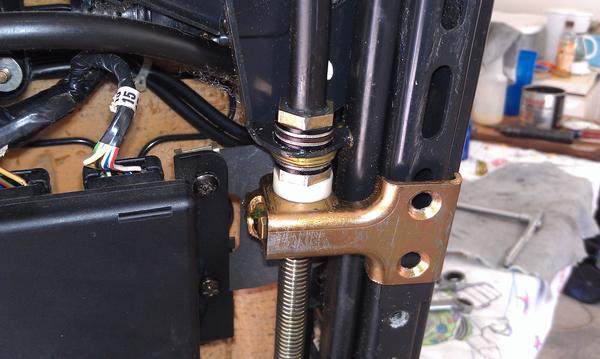
Turn the drive cable and adjusting screw to bring the adjuster nut/bracket all
the way up against the stop bushing.
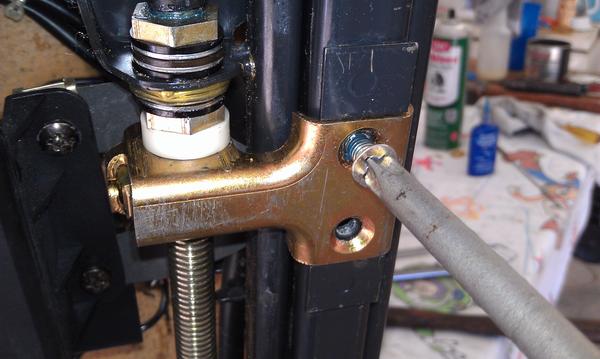
Apply removable thread locking compound to both Phillips head screws and secure
the adjuster bracket to the slider.

Remove the locking pliers from the drive cable. Grasp the cable housing and
install the motor end of the drive cable to the drive motor. Make sure the cable
housing slips into the hole in the metal bracket.
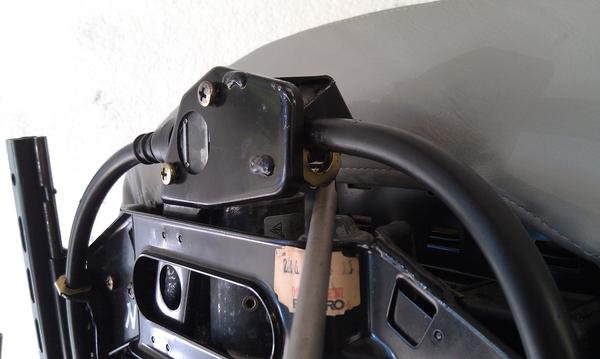
Push the drive cable housing retaining clip back in to place to hold the cable
housing. Be sure the housing isn't so far through the hole in the bracket so as
to interfere with the manual seat drive gears.
Install the retaining clip on the adjusting screw end of the drive cable housing
and that side is complete.

Repeat the entire process for the other side, making sure to re-install the wire
retainer removed at the beginning, and the whole seat should be rock solid
again. You may have to turn the drive cables slightly to get their square ends
to align with the socket in the drive motor correctly but it won't be enough to
affect straight travel or position.
Hope this helps
__________________
Mike
1990 928 S4





























































